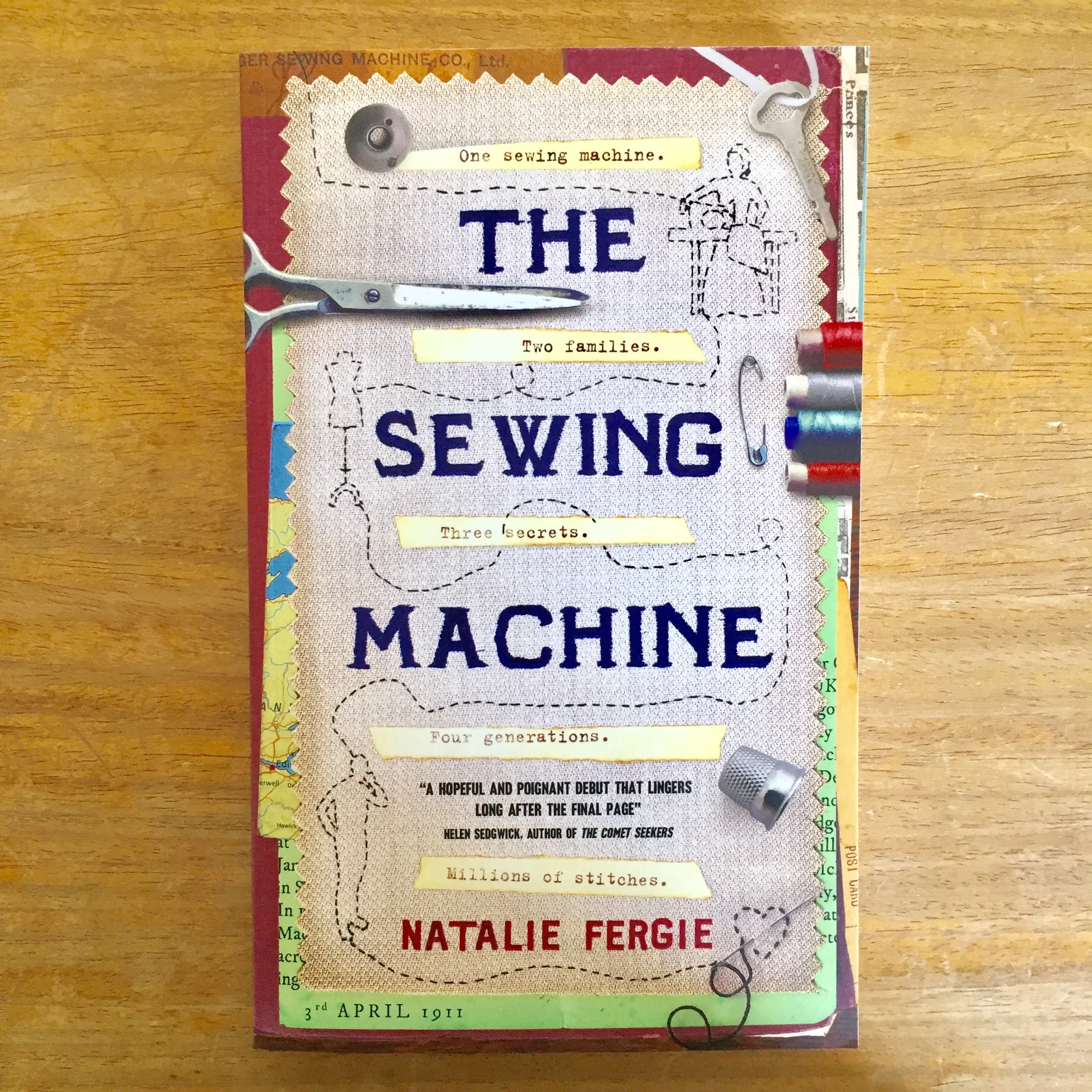The Sewing Machine
The book, my sewing machine collection, and right at the bottom, a bit about me.
All writing is writing.
Ever since I was a little girl, I have written.
I graduated from writing stories at school, to numerous long letters to penpals. Letters are, of course, a different kind of storytelling. After that I moved onto my first novel (which is still in a drawer, and is going to stay there), and then in 2006 I started a blog.
I firmly believe that all writing is writing, and it doesn't matter if it's a quick note inside a card, or a few tweets, it all counts.
It takes a long time to move from first idea to published book.
I started plotting The Sewing Machine in Autumn 2014 and it was published in April 2017. It's been an adventure in itself, with twists and turns and tears and smiles.
The inspiration for the novel.
I have a bit of a sewing machine collection. There are eleven in the house at the moment, and every single one is second (or third or fourth) hand. My father-in-law is partly responsible for this obsession, because he found an abandoned 1897 treadle machine lying beside a skip (dumpster) in Edinburgh and phoned me to ask if I wanted it — and of course I said 'yes'.
The woodwork was quite tired and tatty, and the machine had lost its cover, but I gave it a good drink of oil and threaded it up and it sewed a perfect seam, first time.
In the drawer was this Singer catalogue, dated 1929 and I can only assume that like her modern day counterpart, the owner had decide that 30 years was long enough and she would like a new machine, thank you very much. Beside the catalogue was a 1936 receipt for wedding flowers. Sweet Peas.
My Singer 99K
If you collect anything, whether it's Harry Potter books or teapots, you will appreciate the need to have a complete set. At this time I had, perhaps, seven sewing machines, and yet as I turned the pages of the little catalogue I was struck by the possibilities! I decided I would like just one more machine, and I chose the simplest round bobbin (as opposed to vibrating shuttle) model; the 99K. I went to google and typed Singer 99K into the search bar. I discovered that the K stood for Kilbowie, the Singer factory on the banks of the River Clyde, and that the model was first made in 1911. Again, I searched, Singer 99K, Clydebank, 1911 and to my astonishment, what appeared on the screen was information about the mass strike at the Singer factory, a strike that started when just three women were moved from one department to another, leaving the remaining dozen to do the work of fifteen. 12,000 workers went on strike, a remarkable event, and all the more significant when you remember that it was another seven years before women were allowed to vote. I had found a book, just waiting to be written.
Writing the book.
I decided I had to have a 99K. I hoped for a 1911 model, but knew it was unlikely because only 2000 were made between January and June of that year, so I decided I would just try and find a machine that worked and I put an advert on Gumtree. A lady from Clydebank (talk about coming full circle) contacted me and I bought her machine for £20. It bore the serial number Y1616700 which means it was made in December 1923. There was a very good chance that the men and women who had gone on strike, had made my machine and I felt as though I was touching history whenever I used it.
So the story found me, really. I spent 15 months writing and rewriting, trying out timelines and deleting a LOT of scenes which weren't needed.
The book was published in April 2017, by Unbound, and the audiobook came out in February 2018. The cover was designed by Mark Ecob, and I did the trailing stitching connecting past and present, on the cover. After you have read it, you can play I-Spy with all the papers and objects on the cover!
And...
...this is me. It's not a professional photograph, it's just me in my kitchen, waiting for the kettle to boil. I live in a village near Edinburgh; much of the book is set in the city, and also in Leith (which any Leither will tell you is a separate place). I spent many hours walking around the streets, visiting locations, looking at museum exhibits, working out how long it takes to walk from where my characters live to where they work, and standing in the library they use. You'll note the present tense, these people are my friends now.
I'm a former nurse, and I trained in the old Royal Infirmary of Edinburgh, before it was sold off for housing. The apprentice in the first chapter of the book walks along the corridors I used every day, and later in the book, we visit the Uniform Room on the top floor of the Jubilee Pavilion where I collected my own uniforms when I started my training.
If you have a minute, read the Acknowledgements at the back of the book, there's plenty of background information there, as well as a huge list of people and organisations who helped with my research.




